Grandma’s $1 Water Pie, also known as Depression Era Pie, is a simple recipe that has often been passed down generation after generation with absolutely no need to alter. Despite the fiscally and emotionally challenging times during the Great Depression, the lady of the house still found ways to give a little sweetness and joy to her loved ones.
It is a reminder of the resilience and determination of our ancestors, that we can easily learn how to make and enjoy sharing both now, and during the next wave of hard times that may just be lurking around the corner.
Origins of $1 Pie
During the Great Depression, families had to search for innovative ways to stretch their limited resources and make do with what little they still had. This hard fact of life led to the creation of many simple and low-cost recipes that could still provide nourishment and a measure of comfort for struggling families.
⇒ The ‘Superweed’ That Saved Large Communities During The Great Depression
In general, pie recipes were popular during the Great Depression because they could be made with minimal ingredients and still provide a satisfying and comforting meal. Water pie became a staple in many households, offering a taste of sweetness and normalcy during a time of great upheaval.
$1 Pie Ingredients
The essential ingredients for Grandma’s $1 Depression Era Water Pie Recipe are likely already in your pantry and are readily available for a nominal price at your local grocery store. available.
- 2 Teaspoons Vanilla Extract: Adds a rich and aromatic flavor to the pie.
- 9-inch Pie Crust: Use a deep-dish pie crust for the best results. You can make your own crust or use a store-bought one. It is important to bring the pie crust to room temperature before using it in the recipe.
- 4 Tablespoons of Flour: Any variety will do, but most folks use white all-purpose
- 1 Cup of Sugar: a little touch of sweetness goes a long way in this recipe.
- 5 Tablespoons of Butter: and by butter, I mean BUTTER, and not that one ingredient away from plastic margarine stuff.
- 1 1/2 Cups of Water: lukewarm works best.
Depression Pie Directions
1. If using a store bought pie crust, make sure to thaw and prep it as the instructions indicate before preparing to make the pie. A frozen crust ( either homemade or store bought) will require about an hour or so to thaw to room temperature.
2. Measure and pour the flour and sugar into a mixing bowl and combine with your fork or a spoon.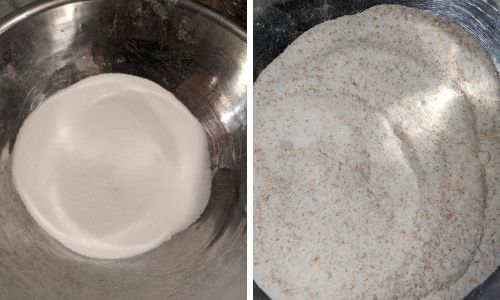
3. Measure and pour the water directly into the pie crust.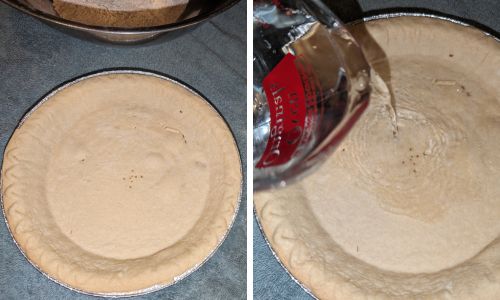
4. Sprinkle the flour and sugar mixture over the pie crust, adding evenly throughout the pie.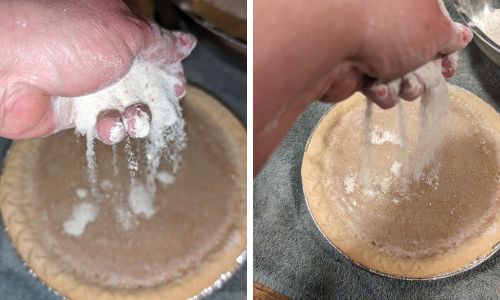
5. Drizzle the vanilla extract evenly over the pie.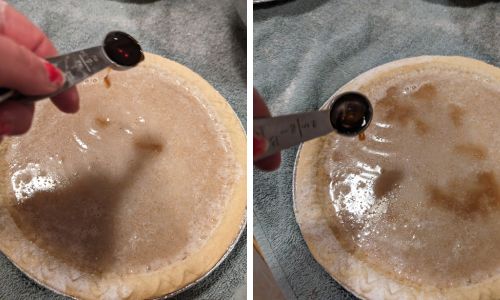
6. Cut the pads of butter and float them on top of the pie.
7. Place the pie on a baking sheet and move it to the oven – carefully so you do not slosh out all of the water and ingredients floating in or on it. Bake it for 30 minutes at 400 degrees. 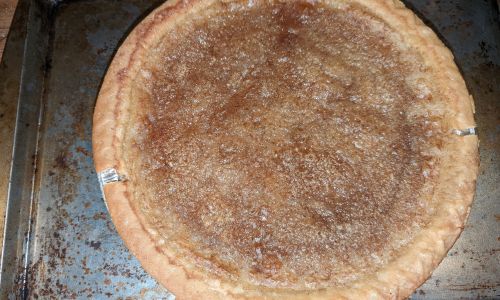
Adjustments for Modern Ovens
Modern ovens may have different heat distribution and temperature settings compared to the ovens used when Grandma’s $1 pie was created during the Great Depression. It’s important to make a few adjustments to ensure the perfect Water Pie in a modern oven.
⇒ How to Build the Oven That Cooks Without Fire, Fuel, Smell, or Smoke
When baking the pie, keep a close eye on the crust to prevent it from burning. If the crust starts to brown too quickly, cover the edges with aluminum foil to protect them from excessive heat.
Storing and Preserving Water Pie
After the pie has cooled completely, cover it and place it in the refrigerator for several hours before cutting. This allows the filling to set properly and develop its creamy texture.
You can store any leftover pie in an airtight container in the refrigerator for up to four days. Make sure to keep the pie cool at all times to maintain its freshness and quality.
If you want to freeze the pie for longer storage, make sure it is completely chilled before wrapping it tightly in plastic wrap and then placing it in a freezer-safe container or bag. The pie can be frozen for up to three months. When ready to serve, thaw the frozen pie in the refrigerator overnight.
Depression era recipes offer valuable lessons that can be applied to our lives today. It teaches us the importance of resourcefulness, creativity, and making the most of what we have.
These kitchens of generations past also emphasizes the value of simple and affordable recipes that can still bring great joy and comfort to our lives, offering a brief respite from whatever is going on in the outside world – making it also a superb morale booster item during a long-term disaster too.
You may also like:
 Ingenious Ways to Purify Water in the Wild
Ingenious Ways to Purify Water in the Wild
Cheap and Easy Way to Build a Root Cellar in Your Backyard (Video)
5 Ammo Stockpiling Mistakes You Are Probably Making Right Now

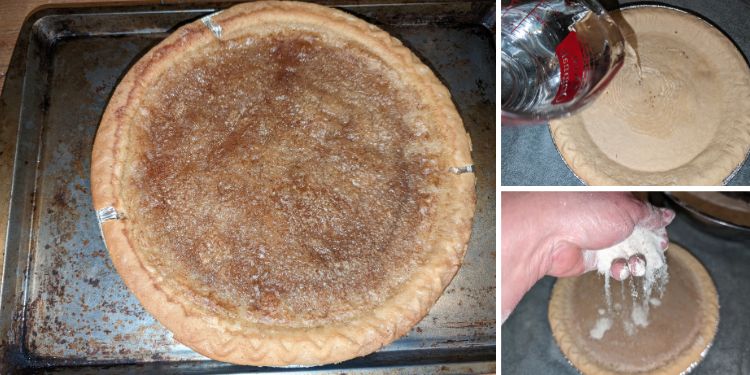




















1$ would buy allot of goods back during the depression. My father, born 1923, told me that 5$ would completely fill a mule drawn buckboard wagon. So, hopefully 1$ would make more than 1 pie. Back then, fruit was seasonal as well, so pies were made from fresh fruit only certain times of the year. Canned and dried goods could be used, but the preservation process had its own cost or overhead that people may not have been able to afford. The recipe seems similar to Chess Pie, which is quite good, made from cornmeal and and flavored with liquor. These recopies are a Godsend and I’m grateful that people still pass them down.
You better rethink wheat all purpose flour. It’s been harmfully modified by Monsanto. Wheat flour is grown and commercially modified in unhealthy ways. Many of my clients who go to Europe end up indulging in pastries or pastas made with wheat flour and feel fine … then come back to the US, do the same, and feel bloated and lethargic. This may be because of the differences in processing of US-made wheat. According to the book “Food Fix”, wheat flour is “sprayed with toxic herbicide glyphosate right before harvest, then preserved with calcium propionate, which has been linked to behavioral issues, headaches, and stomach inflammation.” Glyphosate (the pesticide in “Roundup”) has been directly linked to increased gluten sensitivity, so the very thing we’re putting on our wheat is causing us more issues with it! While our wheat isn’t technically a GMO (genetically modified organism), it has been hybridized to be shorter, darker, and higher yielding, and these hybridizations can make the wheat less healthy for us as consumers.
I would probably try adding cinnamon also. Looks yummy.
Why do preppers go back to the great depression period some of the remnants of past history that still haunt us?
Interesting how we look back at the great depression as the start of the survivalist era to the modern prepper period. The pioneer period where people who wanted a fresh start from Europe bringing some traditions that did not always work in the new world or the old west.
The new Americans, sod busters, where learning new life skills that were based on the fresh environment not always the same they encountered back in their cozy European hometowns. There were other native cultures living there first, who also learned by trial and error what America was about.
There was a clash of cultures on in the old west Native versus the Europeans. Land rights dominated by Spanish legal that were foreign to the free spirit Native Americans who lived on the land without restrictions of ownership. Europe was dominated by kings and queens who thought they only had divine rights to owning land by title.
Isn’t it funny how in times of desperation we look back at eras of self efficiency and think they had it better. We in modern times as far back as Carter, Nixon, Bush, Clinton, to our current era of Obama and Biden. Americans have gotten into a slump a rut of overindulgence thinking high tech and big government will save us.
The one thing older generations knew was being creative in tough times, motivated, use that American ingenuity to keep their heads calm in tough times.
Thank God our traditional values are still in place despite high tech intrusive social media and smartphone cameras. We should look at the past take the knowledge gained but also use these past experiences as a guide. Not a worship of past generations who where the foundation of America. We need to stand on our two feet praise God for grace he gave us up to now. Ask him to make our America great again before it is too late.
BINGO!
“Isn’t it funny how in times of desperation we look back at eras of self efficiency and think they had it better. We in modern times as far back as Carter, Nixon, Bush, Clinton, to our current era of Obama and Biden. Americans have gotten into a slump a rut of overindulgence thinking high tech and big government will save us.”
If you want to start a fight, tell someone to get off all media. Watch your eyes when they try to scratch them out. Far too much reliance on fake and not enough on self and a community. Not many fear God anymore it seems. Fear of the Lord is the beginning of knowledge.
Well, there were no “convenience foods” back then. Staples were flour, cornmeal, sugar, tea, coffee, root cellar veggies, cheeses. No grocery stores out in rural areas when my grandmother was born in Sioux City, Iowa. They had general stores selling staple goods. Candy was either locally made or shipped in from the eastern states by train. Chocolate was a luxury item…so cocoa powder, vanilla extract were special. I remember something about the Watkins sales rep coming to town.
Butter was churned, cream separated, from milked cows. Most of my grandparents friends made all their own dairy items and killed their own meat. Pigs, chickens,rabbits, geese, cows, eggs. Dead livestock killed by lightning or other event, like broken leg, was rendered. Only diseased animals were buried or burned on a pyre. Deer, fish, hares, pheasants were harvested from the land. Potatoes were grown en masse, served every single meal. Other root vegetables, cabbage and greens. Most of the fruit was apples & berries& cherries. Lucky folks had stone fruit trees, but they had to be protected in winters, so town people had them. Pecan and walnut trees were highly valued. People grew so much of their own food.
My English teacher in 8th grade talked alot about corn meal mush…fried in bacon grease…with maple syrup or jam. She grew up in the Midwest during the Dust Bowl days of the Great Depression. People were lucky to even have good water sources.
Both my parents were Depression , war time familys
God, Country , America 1st
they hung traitors , prosecuted crime familys
and made sure that they protected your america and countries around the world
Well Things have changed :
we accept traitors, judas , crime family s , and dont prosecute
Gramma may have been poor
But a lot can be said about the past and how they loved God, Appreciated thier neighbor , and gave to those in need as a offering of friendship
Now it seems , like the more you give , the more they take , and those in need look at you as contempt , and want to figure out how to conquer
Look to the old ways , the lost ways , the time s of past , when people were aged and new that taking care of you not only helped out , but created a better society
Dont Stop Caring , Prosecute crime s , especially those in place s of leadership , politicians
FBI , CIA , DOJ, all crime organizations
Hanging traitors and persecuting crime families would be a great start.
*saw it on youtube made it 2 weeks ago but used wrong pie crust cause i read 9″ Pie and didn’t realize it was the graham cracker type. still worked but the bottom crust was like hard candy. i still ate it wasn’t going to thrown away.
now i get the recipe here So yep gonna buy correct pie crust LOL